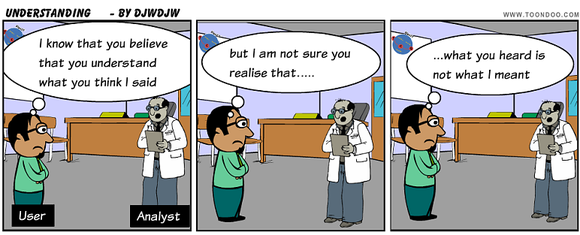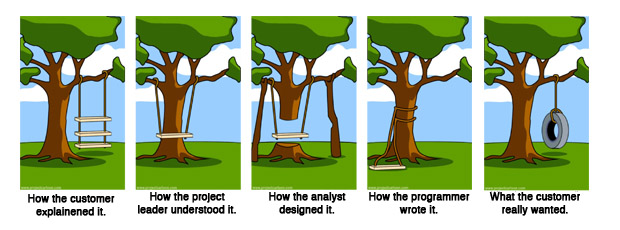Introduction
Why don’t projects progress as planned? There are a gazillion reasons! However, there is a common thread. . . communication and expectations. By being aware of the relationships between entities and communication patterns, one can identify and address the pitfalls.
Consider a hypothetical scenario, where a supplier is commissioned to do a project for a customer.
Who is a customer? A customer receives the outcome of the project, or a product or service and authorizes it’s payment.
Who is a supplier? A supplier executes the project, provides the product or service and receives payment for it.
One may ask: “What about all the other people in the deal / transaction?” They are typically agents, brokers, sub-contractors or regulatory authorities. And, they may or may not have the interests of the supplier or the customer at heart. It is most useful to find out about all the entities involved and develop an appreciation of the relationships and interests in the project. This includes authority, accountability and how the money flows.
Divided Loyalties
One may also ask: “What about the situation where a customer receives service from a provider who is paid by another party?” For example, doctors employed by by the state or insurance companies to provide healthcare to patients. These types of relationship are problematic because the accountability link is broken. That is, irrespective of the quality of service, the the doctor receives a salary. Patients are unable to withhold patronage or payment if service is poor. The self regulating incentive for the supplier to provide quality service for payment is lost. This encourages the service provider to develop split loyalties prioritising winning favour of the paying entity at the expense of service to the customer.
If possible, try to close the accountability link. If not possible proceed cautiously, alert to the pitfalls.
A Customer/Supplier Communication Model
I have found it interesting to model supplier and customer interactions based on their subject knowledge. That is, how competent is the supplier, and how well does the customer know what they want?
| Customer does not know what they want | Customer knows what they want | |
|---|---|---|
| Competent Supplier |
|
|
| Incompetent Supplier |
|
|
Observed Outcomes
- Incompetent supplier and customer that does not know what they want:
Results in a project that flounders and gets abandoned, wasting everyone’s time and money. - Competent supplier and customer that does not know what they want:
Project progresses slowly with many changes, costs overruns and missed deadlines. This results in a product that does not satisfy the customer, nor reflect the capabilities of the supplier. - Incompetent supplier and customer that knows what they want:
Has the potential of being the most acrimonious of all relationships where the customer walks away from the deal without paying the supplier or ends up suing the supplier. - Competent supplier and customer that knows what they want:
Results in the project with the most chance of success. However, it may not look that way at the outset, because there is usually so much effort and communication spent up front clarifying and understanding what is to be be provided.
Conclusion
By understanding relationships between entities, focusing on effective communications and clarifying expectations we we can avoid many of the pitfalls in managing projects..


